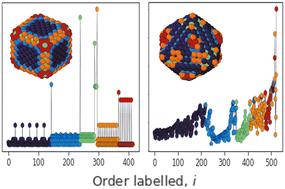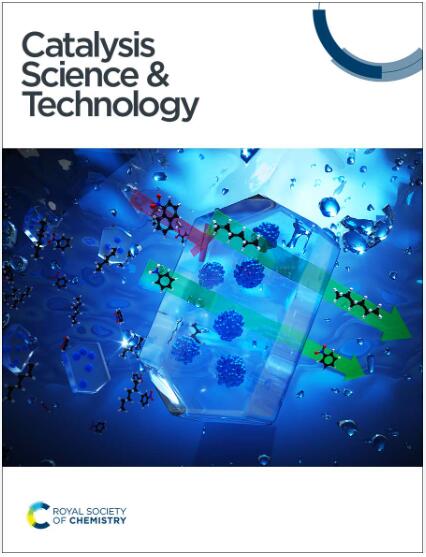用于催化应用的模拟金属纳米粒子表面的无监督模式识别†。
IF 4.4
3区 化学
Q2 CHEMISTRY, PHYSICAL
引用次数: 0
摘要
将有监督的机器学习应用于催化金属纳米颗粒的研究,已证明能为一系列预测任务提供出色的性能。然而,这一成功的前提是颗粒已被彻底表征,并且属性标签是已知的。即使在专门的计算研究中,金属纳米颗粒的标记仍然是大多数机器学习研究的瓶颈,原因要么是计算成本高,要么是与感兴趣的实验特性相关性低。为了促进机器学习在催化领域的更广泛应用,需要一种计算成本低廉的策略,通过与催化活性相关的标签来描述金属纳米粒子。在本研究中,我们提出了一种完全由数据驱动的方法,可以自动描述模拟金属纳米粒子表面原子的形态和催化活性,并评估其在催化应用中的实用性。本文章由计算机程序翻译,如有差异,请以英文原文为准。

Unsupervised pattern recognition on the surface of simulated metal nanoparticles for catalytic applications†
The application of supervised machine learning to the study of catalytic metal nanoparticles has been shown to deliver excellent performance for a range of predictive tasks. However, this success assumes that the particles have been thoroughly characterised and that the property labels are known. Even in exclusively computational studies, the labelling of metal nanoparticles remains the bottleneck for most machine learning studies due to either high computational costs or low relevance to the experimental properties of interest. To facilitate more widespread use of machine learning in catalysis, a computationally affordable strategy to describe metal nanoparticles by a label that is relevant to their catalytic activities is needed. In this study we propose an entirely data-driven approach that can be automated to characterise the patterns and catalytic activities of the surface atoms of simulated metal nanoparticles, and evaluate its utility for catalytic applications.
求助全文
通过发布文献求助,成功后即可免费获取论文全文。
去求助
来源期刊

Catalysis Science & Technology
CHEMISTRY, PHYSICAL-
CiteScore
8.70
自引率
6.00%
发文量
587
审稿时长
1.5 months
期刊介绍:
A multidisciplinary journal focusing on cutting edge research across all fundamental science and technological aspects of catalysis.
Editor-in-chief: Bert Weckhuysen
Impact factor: 5.0
Time to first decision (peer reviewed only): 31 days
 求助内容:
求助内容: 应助结果提醒方式:
应助结果提醒方式:


